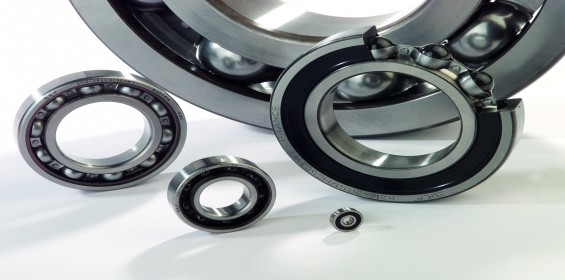How to achieve the 3 Rs in Bearings
Published: 26 May, 2022
By Alan Stewart, Brammer Buck & Hickman Bearing Product Manager – SKF Products
At a time when the world is looking to limit its energy usage and impact on the climate, pressure is mounting on industry world-wide to reduce its overall environmental impact. The products and services we produce need to be sustainable; they need to be generated through economically-sound processes that minimise negative environmental impacts while conserving energy and natural resources.
Individual bearings use relatively little energy, but as they are in such widespread use and are also one of the most frequently replaced components, the sustainability of the bearings you use matters. By applying the 3 Rs waste hierarchy - Reduce, Reuse, Recycle – to bearings, we can make a genuine difference.
Reduce
Is it possible to reduce the number of bearings used? Well, you can’t simply not use a bearing where one is required, but by extending their life you can reduce the total number of bearings used during that machine’s lifespan.
To ensure longevity, select the right bearing for the task at hand. There’s an incredibly wide range to choose from, many of which have been designed specifically for offshore use. SKF High Endurance Slewing Bearings, for example, have a reduced friction, which can increase wind turbine and pitch control performance. The bearing features a polyurethane seal which enhances resistance to ozone, UV and salt water. The seal design is also more resistant to ring deformation during operation, which reduces grease leakage and water ingress.
Not only should the bearing be the right type, but it should also be of a good quality. Opting for a low cost, unrecognisable brand not only risks premature failure and costly downtime, but it may also lose performance over time which almost always results in wasted energy as most systems keep drawing power despite the drop or lack of output.
Ensuring product is correctly fitted also has a part to play. Misalignment can lead to friction and vibration which can significantly increase energy consumption, plus the risk of premature failures. Alignment tools are readily available which allow you to increase machine reliability through easy to use and accurate alignment. Other options include selecting products that don’t require realignment.
Sealed, re-lubrication free bearings are beneficial as they help to reduce lubrication usage, there is no lubricant to contaminate the waste water, plus no cleaning rags and paper towels to dispose of. Alternatively, automated lubrication systems can be installed to ensure the correct amount of lubrication is applied, reducing wastage.
Reuse
Bearings in wind turbines are frequently very large, specialist units and are therefore expensive to replace and come with a long lead time. However, rather than replace a bearing that is failing, have you considered having it repaired or using a remanufactured bearing?
Bearing remanufacturing can significantly reduce carbon emissions, consuming around 10% of the energy of making a new one. By extending bearing service, remanufacturing avoids the scrapping of components and wasteful use of natural resources. The lead time on a remanufactured bearing will also be shorter than for a new one.
In addition to bearings remanufacture, lubricants can also be reused in some cases. SKF’s RecondOil, for example, removes contaminants from used oils, and returns them to a cleaner, usable and high-grade state. Compared to a traditional, linear use, regenerating the oils allows for a significant decrease of CO2 emissions.
Recycle
Whilst the amount of steel per bearing is on the decline due to better bearing design and more efficient manufacturing methods, that steel still has a value as scrap. Not all bearings are easy to recycle though and normally only parts of them can be recycled. Check with the manufacturer.
Beyond the Product
The 3Rs are a good starting point to help improve the sustainability of your bearings usage, but you can’t apply sustainability to the product in isolation. It’s important to take into account every aspect surrounding that product, including the manufacturer and its suppliers and distributors. Sustainability should encompass the use of raw materials; the manufacturer’s factory processes and utilisation of those materials; the amount and type of energy used to make the bearings; distribution and transportation. Does the manufacturer deploy the IS0 14001 Environmental Management System and the ISO 50001 Energy Management system across all of its sites, for example?
Reducing wastage when it comes to bearings is not only good for the planet, but makes good business sense. A bearing that performs well over a long period of time is a bearing that won’t slow your machinery down and won’t lead to expensive unplanned maintenance and downtime. Applying the 3 Rs to bearings is a good investment in the future, whichever way you look at it.
Brammer Buck & Hickman, a Rubix group company, is Europe’s leading authorised bearings distributor, selling over 100 million bearings annually from the largest, most comprehensive bearings range and stock. Read its new bearings sustainability brochure, produced with bearings manufacturer SKF, at uk.rubix.com/supplier/skf






